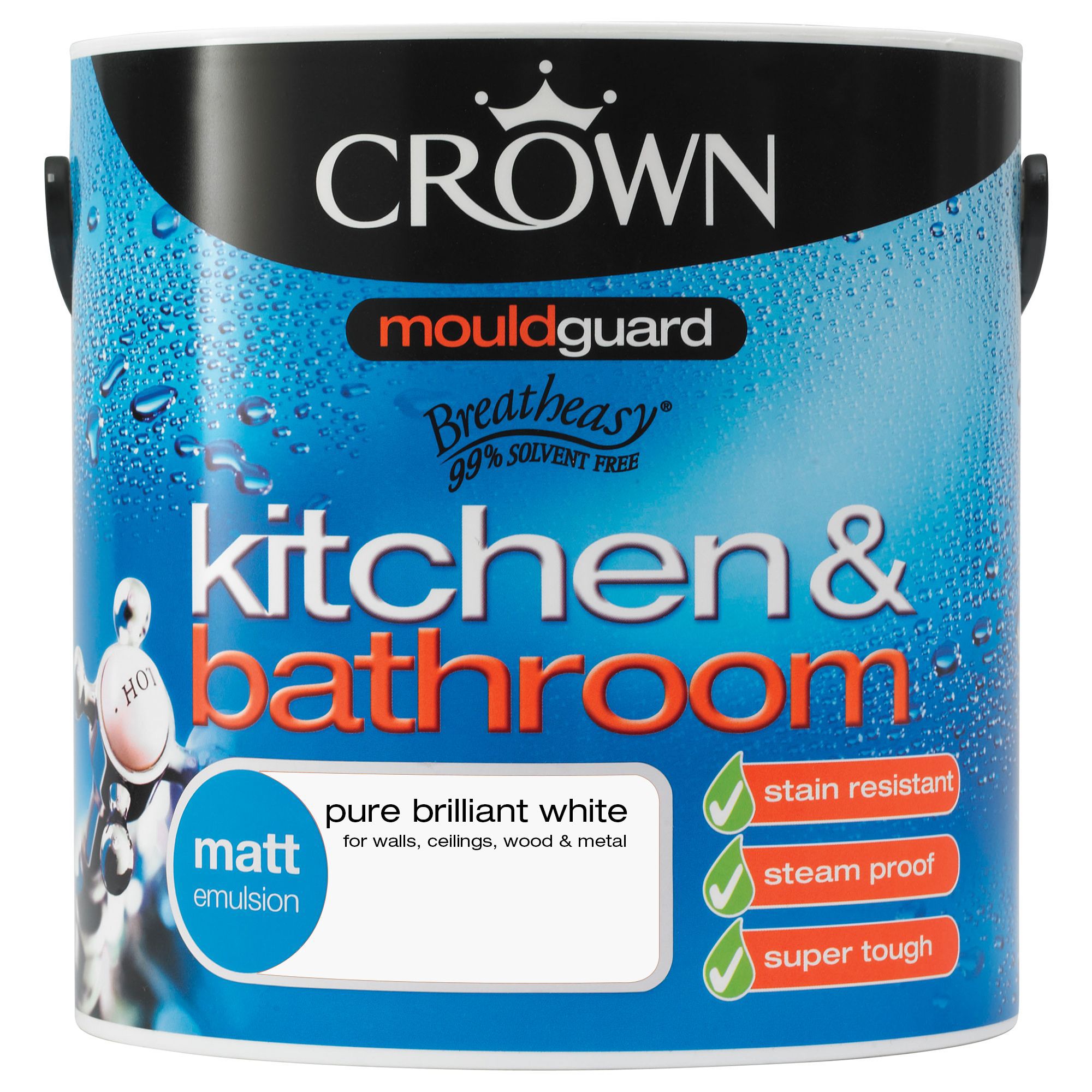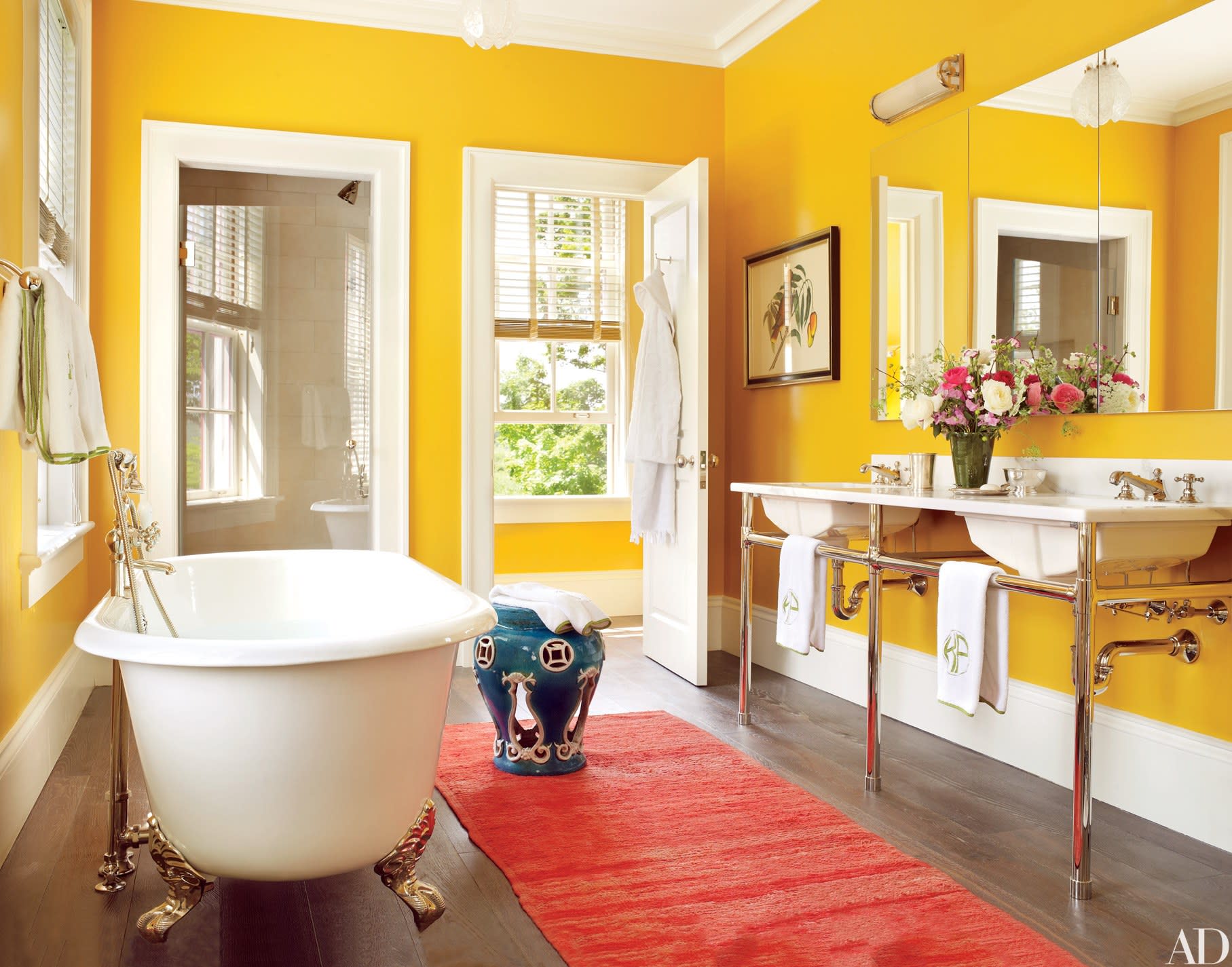Color Selection and Trends: Kitchen And Bathroom Paint
The colors you choose for your kitchen and bathroom can dramatically impact the overall feel and atmosphere of these spaces. From calming neutrals to vibrant accents, the right paint colors can enhance your home’s aesthetic and functionality. Staying abreast of the latest trends in color selection can help you create a stylish and inviting environment.
Popular Neutrals
Neutral colors are a timeless choice for kitchens and bathrooms, providing a clean and versatile backdrop for various design styles. These colors offer a sense of calm and spaciousness, allowing other design elements to stand out.
- White: A classic choice, white reflects light, making rooms appear larger and brighter. It provides a blank canvas for various design styles, from minimalist to traditional.
- Cream: Warmer than white, cream adds a touch of softness and elegance. It complements both modern and traditional décor and works well in rooms with limited natural light.
- Gray: A popular neutral, gray offers a sophisticated and modern look. It pairs well with a wide range of colors and materials, creating a versatile backdrop for different design styles.
- Beige: A warm and inviting neutral, beige creates a cozy and comfortable atmosphere. It complements natural materials like wood and stone, making it ideal for traditional and farmhouse kitchens and bathrooms.
Bold Accents
While neutrals create a foundation, bold accent colors add personality and visual interest. These colors can be used on walls, cabinets, or even as statement pieces like artwork or furniture.
- Deep Blues: Evoking a sense of tranquility and sophistication, deep blues are a popular choice for bathrooms. They create a spa-like atmosphere and complement natural wood tones.
- Rich Greens: Inspired by nature, rich greens bring a sense of freshness and vitality to kitchens and bathrooms. They can create a calming and inviting ambiance and pair well with natural materials like wood and stone.
- Warm Terracottas: Terracotta colors evoke a sense of warmth and earthiness, making them perfect for creating a cozy and inviting atmosphere in kitchens and bathrooms. They complement rustic and farmhouse styles and can be paired with natural wood tones.
Color Psychology
Color psychology explores the impact of colors on human emotions and behavior. Understanding these principles can help you choose colors that promote relaxation, energy, or focus in your kitchen and bathroom.
“Color can influence our mood, behavior, and even our perception of space.”
- Blue: Often associated with calmness, peace, and tranquility, blue is a popular choice for bathrooms, creating a spa-like atmosphere.
- Green: Green represents nature, growth, and renewal. It can create a calming and refreshing ambiance, making it suitable for both kitchens and bathrooms.
- Yellow: Known for its cheerful and energizing qualities, yellow can brighten up a space and stimulate creativity. It is a popular choice for kitchens, promoting a sense of warmth and happiness.
Natural Light and Color Perception
Natural light plays a crucial role in how colors are perceived. The amount and type of natural light in a room can affect the appearance of colors.
- North-facing rooms: Receive cool, diffused light, making colors appear cooler and less vibrant. Consider using warmer colors to compensate for the cooler light.
- South-facing rooms: Receive warm, direct sunlight, making colors appear brighter and more vibrant. You can use cooler colors to balance the warmth of the light.
- East-facing rooms: Receive warm morning light, making colors appear brighter and more energetic. You can use cooler colors to balance the warmth of the light.
- West-facing rooms: Receive warm afternoon light, making colors appear more intense. You can use cooler colors to balance the warmth of the light.
Color Palettes for Kitchens and Bathrooms
Creating a cohesive color palette is essential for achieving a harmonious and stylish look in your kitchen and bathroom.
- Neutral Palette: This palette features a mix of neutral colors like white, cream, gray, and beige, creating a clean and versatile backdrop for various design styles. You can add pops of color with accessories, artwork, or textiles.
- Warm Palette: This palette incorporates warm colors like reds, oranges, yellows, and browns, creating a cozy and inviting atmosphere. It is perfect for kitchens and bathrooms with a traditional or farmhouse style.
- Cool Palette: This palette features cool colors like blues, greens, and purples, creating a calming and serene ambiance. It is ideal for bathrooms, creating a spa-like atmosphere.
- Monochromatic Palette: This palette uses different shades of the same color, creating a sophisticated and elegant look. It can be used in both kitchens and bathrooms, allowing for subtle variations in color and texture.
- Complementary Palette: This palette uses colors that are opposite each other on the color wheel, creating a high-contrast and vibrant look. It can be used sparingly as an accent color in kitchens and bathrooms, adding a touch of excitement to the space.
Painting Techniques and Tips
A flawless paint job starts with a well-prepared surface. It’s like laying a foundation for a house; without a solid base, the paint won’t adhere properly, and the final result will be less than stellar. Let’s delve into the art of preparing surfaces and explore essential techniques to ensure a professional finish.
Surface Preparation
Before you even think about picking up a paintbrush, you must dedicate time to surface preparation. It’s the cornerstone of a successful paint job. A thorough preparation ensures that the paint adheres properly, providing a smooth, even finish that lasts. Here’s a breakdown of the essential steps:
- Cleaning: Remove dirt, grease, and grime with a cleaning solution. This can be as simple as warm water and dish soap or a commercial degreaser for stubborn stains. Ensure the surface is completely dry before proceeding.
- Sanding: Sanding smooths out imperfections and creates a better surface for the paint to adhere to. Use fine-grit sandpaper for walls and trim and medium-grit sandpaper for cabinets. For walls, lightly sand the entire surface to create a uniform texture. For cabinets, focus on sanding down any rough spots, scratches, or imperfections.
- Patching: Fill in any holes or cracks with spackle or patching compound. Apply the compound with a putty knife, ensuring it’s smooth and level with the surrounding surface. Allow it to dry completely before sanding it smooth.
Painting Kitchen and Bathroom Cabinets
Kitchen and bathroom cabinets often get a lot of wear and tear, making them prime candidates for a paint refresh. Here’s a step-by-step guide to painting cabinets like a pro:
- Remove the doors and hardware: This makes it easier to paint the cabinets thoroughly. Remove the hinges, knobs, and pulls, and label them to ensure they go back in the right place.
- Clean and sand: Use a degreaser to remove any grease or grime from the cabinet doors and frames. Then, lightly sand the surfaces to create a smooth finish.
- Prime: Applying a primer creates a barrier between the old paint and the new, ensuring better adhesion and a smoother finish. Choose a primer specifically designed for cabinets, and apply it evenly with a brush or roller.
- Paint: Apply two coats of paint, allowing each coat to dry completely before applying the next. Use a brush or roller for a smooth finish, and make sure to paint the edges and corners thoroughly.
- Reassemble: Once the paint is completely dry, reassemble the cabinets by attaching the doors and hardware.
Painting Walls and Trim, Kitchen and bathroom paint
Painting walls and trim is a common DIY project, but it can be challenging to achieve a professional-looking finish. Here are some tips for success:
- Use painter’s tape: Painter’s tape is essential for creating clean lines between different colors or surfaces. Apply it to the edges of the trim, around windows and doors, and any other areas you want to protect.
- Apply even coats: Thin coats of paint are better than thick ones. Apply the paint in smooth, even strokes, avoiding drips and runs.
- Avoid brush strokes: Use a brush for painting trim and corners, but for large areas, use a roller. Roll the paint in a W or M pattern to ensure even coverage and avoid brush strokes.
- Clean up immediately: Clean your brushes and rollers immediately after use to prevent the paint from drying and becoming unusable.
Tips for Professional-Looking Results
Achieving a professional-looking paint job takes time, patience, and attention to detail. Here are some additional tips:
- Use high-quality paint: Don’t skimp on paint quality. High-quality paint will cover better, last longer, and produce a smoother finish.
- Choose the right tools: Use brushes and rollers that are appropriate for the type of paint and surface you are painting.
- Take your time: Don’t rush the process. Allow each coat of paint to dry completely before applying the next.
- Light: Adequate lighting is crucial for a successful paint job. Ensure you have enough light to see what you’re doing and to spot any imperfections.
- Practice: Practice makes perfect. Start with a small area or a test board to get a feel for the paint and tools before tackling the entire project.


